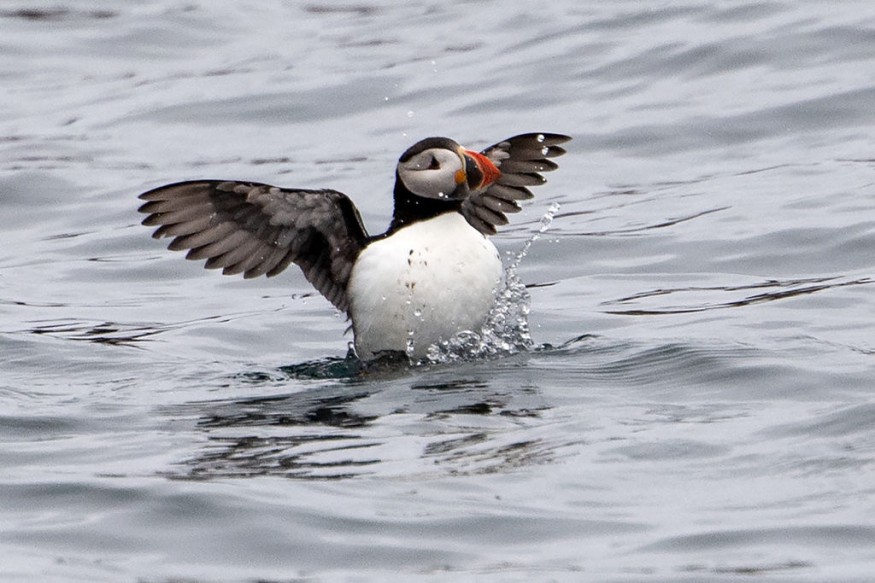The recovery of the Atlantic Puffin population amidst the climate change risks demonstrates that this phenomenon is "not always as tidy as we think."

According to scientists who monitor the birds, the puffins had their second consecutive rebound year for fledging chicks.
This contradicts environmental trends, as scientists have warned that warmer waters off New England endanger the birds by reducing the type of fish they require to feed their chicks.
Stable population
The good news comes as the Audubon Society celebrates its 50th year of caring for Maine's puffin colonies, which it restored from a few dozen pairs.
Don Lyons, director of conservation science at the National Audubon Society's Seabird Institute in Bremen, Maine, claims that there are now up to 3,000 birds and that the population is stable.
"This year is a good example of how complex things are. We can't boil it down to one variable," he said in an interview. "We still have a lot to learn."
Puffins, often known as "sea clowns" or "sea parrots," nest in burrows and feed their babies tiny fish like herring.
Due to a lack of such fish, the colonies had one of their worst years for reproduction in decades.
Audubon and other conservation organizations have linked the fish shortage to rising sea temperatures.
The Gulf of Maine, which contains puffin colonies on its islands, is warming faster than the rest of the world's oceans, and the last few years have been particularly warm.
This summer appears to have been "still unusually warm," according to David Reidmiller, climate center director at the Gulf of Maine.
Resiliency of seabirds
The capacity of puffins to reproduce despite environmental changes shows seabird resiliency, according to Bill Sydeman, president and principal scientist of the Farallon Institute, a marine conservation group based in California.
However, long-term threats posed by climate change, such as lethal heat waves, food loss, island loss due to sea level rise, and the inability to breed, remain existential threats to puffins and many other seabirds.
"The problem with climate change is these breeding failures and low breeding productivity years are now becoming chronic," Sydeman said. "There will be fewer young birds in the population that are able to recruit into the breeding population."
In recent years, scientists have focused on the consequences of climate change on seabirds.
Because of the deaths of some of the puffin's auk family relatives, such as common murres and Cassin's auklets off the West Coast, interest in the subject has increased.
Due to the difficulties that seabirds encounter, good breeding seasons are very vital, according to P. Dee Boersma is a biology professor at the University of Washington and the director of the Center for Ecosystem Sentinels.
"What that means is we should be more cautious and concerned about reproductive failures and things like that to make sure that in good years everyone that wants to has a chance to breed, and do well," Boersma said.
The puffins of Maine are the only breeding Atlantic puffins in the United States. The species is found throughout the North Atlantic, from Maine and Canada to Europe.
Other countries with large puffin populations, like Iceland, have seen a fall in the number of birds in recent decades.
Puffins can now be found on Matinicus, Eastern Egg Rock, Seal Island, and Petit Manan Island.
Related Article : Endangered Birds: Puffins Join Threatened Species List
Related Video:
© 2026 NatureWorldNews.com All rights reserved. Do not reproduce without permission.





